Bhutan and Sikkim

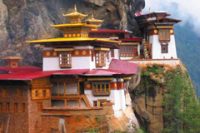
Taktsang Monastery
Taktsang (Tiger’s Nest) Monastery perched 3,000 feet above the Paro Valley, is the most famous monastery of Bhutan and the most sacred; the Bhutanese pilgrimage here once during their lifetime.
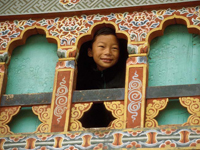
It’s a land where Buddhist monasteries cling to mountain cliffs, hillside rice paddies flourish in the sun, and ancient dzongs stand guard.

Punakha Dzong
One of the most historic dzongs (fortress) in the country, located in the confluence of two rivers.
Featured Tours
Thailand, Bhutan & Nepal
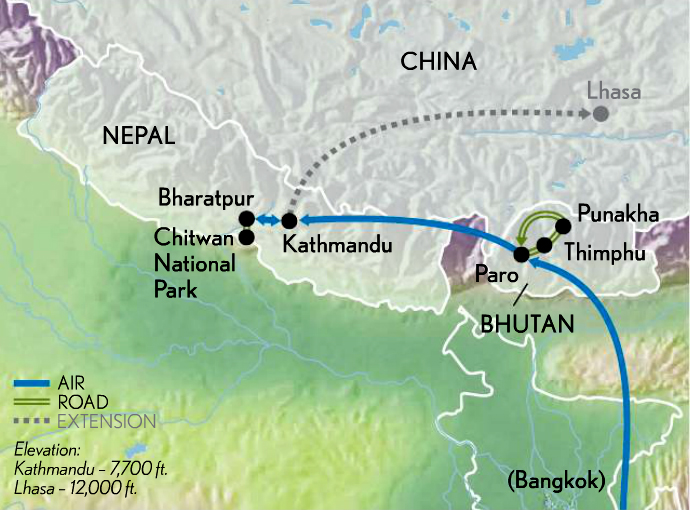
Day 1: Arrive Bangkok, Thailand
Arrive in beautiful Bangkok, where you are met and transferred to your airport hotel.
Day 2: Paro, Bhutan/Thimphu | Welcome to Bhutan 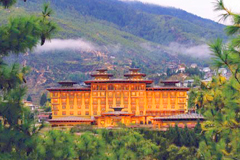
Fly to Paro, where you are met and receive a tashi khadda (traditional welcome), including the gift of a white scarf, conveying good will. Drive to Thimphu, the world’s smallest capital city, to settle into your hotel. Relax, enjoy lunch and afterward explore the city. Visit the National Memorial Chorten, a monument to world peace and prosperity. The finely executed wall paintings and delicately constructed statues within the monument provide a deep insight into Buddhist philosophy. Travel to Tashichhodzong, home to Bhutan’s royal government. Join fellow guests for a welcome dinner.
Day 3: Thimphu | Fine Weavers at Work
Explore the Folk Heritage and National Textile Museums for an in-depth look into Bhutanese culture. See examples of weaving techniques from different areas of Bhutan as well as styles of traditional dress and textiles. A small group of weavers usually works their looms inside the shop, giving you the chance to see weaving firsthand. Later, visit the National Library to view its extensive collection of Buddhist literature.
Day 4: Punakha | The Divine Madman 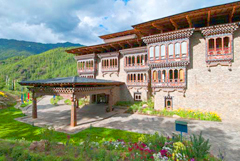
Drive over the 10,500-foot-high Dochula Pass in the stunning Himalaya, observing many colorful prayer flags along the way. The elevation drops when you arrive in sub-tropical Punakha. Stop at the 17th-century Punakha Dzong; damaged over the centuries by catastrophic fires and an earthquake, the dzong has been restored in recent years by the present monarch. Continue to the Chimi Lhakhang, also known as the Temple of the Divine Madman. It was named after a beloved saint and teacher from Wangdue Phodrang Dzong, which you also have time to see. Stretching along a hilltop, it overlooks the confluence of the Punakha Chu and Tang Chu rivers and is in the process of being restored. Return to Thimphu for dinner.
Day 5: Paro | Monasteries, Rivers and Relics
Travel overland to Paro, home to Bhutan’s oldest and most important temples. En route, visit Chuzom, located where the Paro and Thimphu rivers meet. To some Bhutanese, such a confluence is symbolic of the union of the mother and father. When you reach Paro, attend a special archery match, Bhutan’s national sport. After lunch, explore the National Museum, housing a collection of relics, religious thankga (scroll) paintings and a natural history collection. Continue to the 17th-century Rinpung Dzong, a majestic Buddhist monastery and fortress built beside a mountain river. Learn about the lifestyle of local farmers this evening when you have dinner in a traditional farmhouse.
Day 6: Paro | Ascent to the Tiger’s Nest 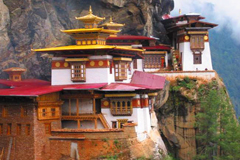
Hike about two miles to the picturesque Taktsang (Tiger’s Nest) Monastery that clings to a cliff 3,000 feet above the valley floor. Spend the day among the monks at this sacred pilgrimage site, where the great tantric mystic Guru Rinpoche (also known as Padmasambhava) is believed to have flown on the back of the tiger to bring the teachings of the Buddhist Dharma to Bhutan. Late this afternoon, drive through the Paro Valley to visit the ruins of Drukgyel Dzong and Kyichu Lhakhang, built by a Tibetan emperor in the seventh century and one of Bhutan’s most sacred shrines.
Day 7: Kathmandu, Nepal | World’s Oldest Shrine
Fly over the Himalaya to Kathmandu, observing the world’s highest glacial peaks, including Mount Everest, as you go. Upon arrival, transfer to your historic hotel, itself an experience in Nepali culture and heritage. Intricate carved wood and terra cotta grace every inch of it. This afternoon, explore the city of Kathmandu, an inspiration to many writers, artists and poets over the years. It boasts a unique symbiosis of Hinduism, Buddhism and Tantrism, influences in evidence throughout the city. During the 14th century, artisans constructed temples, monasteries and elaborate courtyards in Kathmandu that today contribute to a fascinating architectural history. Ride in a rickshaw to visit Durbar Square and Teleju Temple, with its gilded roofs. Stop at the house of the Living Goddess (Kumari). Walk through the bazaar and labyrinthine streets of the old city and explore Swayambhunath (Monkey Temple), the oldest shrine in the world. The four sides of this ancient structure are painted with the compassionate eyes of Buddha; between them, a mystical third eye symbolizes true wisdom.
Day 8: Kathmandu | Historic Durbar Square 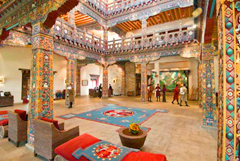
Explore Patan, known for its fine bronze, silver and copper works, and home to hundreds of Buddhist monuments. Visit Durbar Square, a historic plaza filled with spectacular architecture, as well as the Royal Baths, the Golden Temple and the Krishna Mandir. Tour the Patan Museum, with its collection of metalwork sculptures, many of which depict Buddhist and Hindu deities. At lunch receive a lesson in Nepali cooking in the home of a local resident and enjoy the results. This afternoon, head out to the village of Bungamati, with stops at the Rato Machhendranath Temple and the Lokeshwar Shrine.
Day 9: Chitwan National Park | Elephant-Back Safari
Fly to Bharatpur, enjoying majestic Himalaya mountain views en route. Once you arrive, drive to your lodge near Chitwan National Park for refreshments and lunch. Afterward, embark on an elephant-back safari to the Gundreni Forest, where you may spot one-horned rhinoceroses, deer, wild boars, monkeys, leopards, sloth bears and perhaps, the elusive royal Bengal tiger. Return to the lodge and enjoy a refreshing cup of tea.
Day 10: Chitwan National Park | Tranquil River Canoeing 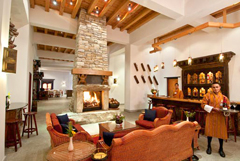
Embark on a full day of wildlife viewing and hiking with experienced naturalists, as well as elephant safaris to remote regions of the park. Go on a nature walk with trained guides who help you identify some of the park’s over 500 species of birds, such as the long-tailed paradise flycatcher and the richly-hued white-throated kingfisher. Later, canoe down the tranquil Narayani River, spotting wildlife as you glide along. Conclude a relaxing day in the wild by watching the sunset at the river’s edge before returning to your luxurious lodge for dinner.
Day 11: Chitwan/Kathmandu | Nepalese Food and Folk Dance
After a morning of wildlife activities, sighting species as diverse as honey badgers and Indian pangolins, drive back to Bharatpur and board a flight to Kathmandu. The remainder of the day is at leisure. Tonight, enjoy a dinner of authentic Nepalese cuisine, complimented by an elaborate and delightful performance from skilled Nepali folk dancers.
Day 12: Kathmandu | Temples and Trade Routes 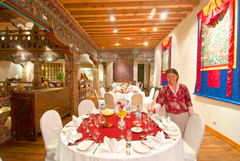
Today, visit the Kopan Monastery nunnery, the largest Tibetan nunnery in Nepal. Visit Boudhanath, home to what is possibly the world’s largest Buddhist shrine. Along with the compassionate eyes of Buddha painted on its walls, gazing in the four cardinal directions to keep watch for righteous behavior and human prosperity, this shrine is resplendent with hundreds of colorful prayer flags. Continue to the Hindu temple of Pashupatinath, one of the most significant temples devoted to Lord Shiva in the world. Situated on the lush, green bank of the Bagmati River, it is built in the pagoda style with a gilded roof and richly carved silver doors. The stories of its origin are the stuff of many legends. Visitors may view the temple from the east bank of the river. After a traditional Nepali lunch, visit the royal city of Bhaktapur, a showcase of medieval Nepalese town life and a UNESCO World Heritage Site. Positioned along what was once a trade route between Tibet and India, this city became a center of wealth and prosperity. This evening, gather with your fellow guests to toast the end of your amazing journey.
Day 13: Depart Kathmandu
After a hearty breakfast and a moment to reflect on your wonderful sojourn among the majestic landscapes, mystical temples and marvelous peoples of Bhutan and Nepal, transfer to the airport to depart or continue on a post-journey extension to Lhasa.
Thailand, Bhutan, India & Sikkim
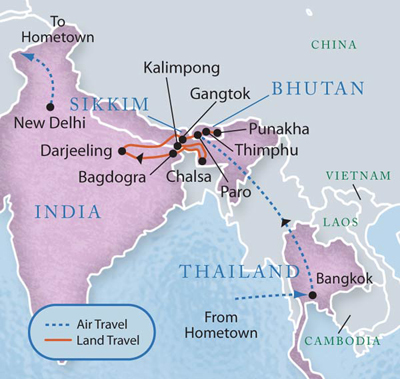
DAYS 1 – 3: Bangkok, Thailand 
Arrive in Bangkok on Day 2. This bustling capital city will enthrall your senses with its pulsing activity, delicious cuisine and architectural treasures. There are countless temples, palaces, stupas, lively markets and shopping for you to explore during your time in Bangkok, a city both ancient and modern.
DAYS 4 & 5: Thimphu, Bhutan
Thimphu is a small, charming capital city in the heart of the Himalayas. On the afternoon of Day 4, visit the memorial to the late King Jigme Dorji Wangchuk, a traditional Bhutanese stupa, also known as a chorten. The Memorial Chorten is an impressive monument with golden spires, tinkling bells, and an endless procession of elderly people circling around it paying homage.
In the evening you will drive past the Tashichhodzong, a Buddhist monastery called the “Fortress of the Glorious Religion,” first constructed in 1641. On Day 5, enjoy a special visit to the Institute for Zorig Chusum, which teaches 13 traditional Bhutanese arts and crafts, and observe the students practicing their crafts. Then visit the Textile & Folk Heritage Museum, a fascinating testimony of Bhutan’s living traditions. In the evening witness a special performance of Bhutanese folk music and dancing.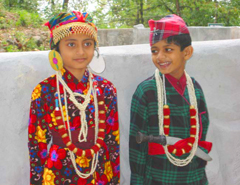
DAY 6: Punakha
Drive through the 10,500-foot-high Dochu La Pass which reveals a dramatic view of the mountain ranges in the distance. In Punakha you’ll visit Punakha Dzong, built in 1637 as the religious and administrative center of the region, and Khamsum Yulley Narngyal Chorten, a newly built stupa. Then see the Punakha Dzong, one of the most historic dzongs in the country, located in the confluence of two rivers. In the afternoon, stroll around the town’s main street, shops and local markets.
DAYS 7 & 8: Paro
Paro lies in a beautiful valley with a rich culture, scenic beauty and hundreds of myths and legends. It is home to Bhutan’s oldest temples and monasteries, as well as the National Museum. Here you will see Rinpung Dzong, “The Fortress of the Heap of Jewels” built in 1646 on a hill above the town, and Ta Dzong, the watchtower built to overlook it. Ta Dzong now holds a fascinating collection of art, relics, paintings, coins, handicrafts and a small natural history collection.
Enjoy a morning excursion to Taksang Monastery, perched on the side of a high cliff. Taksang is the most famous monastery of Bhutan and the most sacred; the Bhutanese pilgrimage here once during their lifetime.

Click Here To Plan Your Vacation
